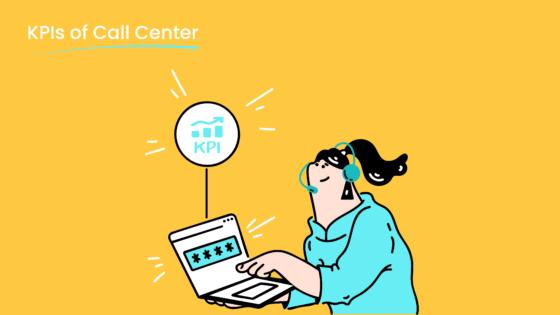What Makes a Call Quality Monitoring System Important

A call quality monitoring system is a tool that evaluates and enhances the quality of interactions between agents and customers. By analyzing calls in real-time or through recordings, it ensures that every conversation meets high standards of customer service. This system plays a critical role in identifying areas for improvement, from agent performance to operational efficiency.
Call quality monitoring improves customer satisfaction by addressing issues like long wait times and unresolved queries. For example, tracking metrics such as First Call Resolution (FCR) helps businesses resolve problems in a single interaction, boosting satisfaction rates. Additionally, real-time feedback empowers agents to refine their skills, leading to better service delivery. Companies like Sobot use such systems to optimize workflows and ensure consistent, high-quality customer experiences.
What Is a Call Quality Monitoring System?
Definition and Purpose
A call quality monitoring system evaluates customer interactions to ensure high service standards. It involves recording and analyzing calls to assess agent performance, identify areas for improvement, and enhance customer satisfaction. By implementing such a system, you can ensure that every customer interaction aligns with your business goals and quality benchmarks.
Call quality monitoring serves multiple purposes. It helps you track agent performance, improve customer service, and ensure compliance with company policies. For instance, quality monitoring applications allow you to score and evaluate calls, fostering ongoing coaching and development for your team. This process not only enhances agent skills but also drives business revenue by improving customer retention. According to Observe.ai, call monitoring ensures quality assurance and optimal customer service by reviewing interactions and providing actionable insights.
| Source | Definition and Purpose |
|---|---|
| Observe.ai | Quality monitoring involves recording and reviewing interactions to improve performance. |
| Teramind | Tracks and evaluates customer interactions to ensure compliance and service quality. |
| Nextiva | Enhances agent performance and customer satisfaction through insights and training. |
| Qualtrics | Ensures agents meet customer expectations, improving satisfaction and loyalty. |
Key Features of Call Quality Monitoring Systems
An effective call monitoring system offers several features that help you maintain high service standards. These features allow you to evaluate calls comprehensively and make informed decisions to improve your operations.
- Real-Time Monitoring: Supervisors can listen to live calls, providing immediate feedback to agents. This feature ensures that issues are addressed as they occur.
- Call Recording and Playback: Recordings allow you to review interactions for training and quality assurance purposes.
- Speech Analytics: Advanced systems use AI to analyze tone, sentiment, and keywords, offering deeper insights into customer interactions.
- Customizable Evaluation Forms: These forms let you create specific criteria for assessing calls, ensuring alignment with your business goals.
- Comprehensive Reporting: Detailed reports provide data on key metrics like average handle time and first call resolution.
A study revealed that 72% of call center managers rely on random sampling for call selection. However, this method often leads to non-representative evaluations. By reviewing 100% of calls, you can gain a more accurate understanding of agent performance and align coaching with actual customer interactions.
Common Standards for Call Center Quality Monitoring
Call center quality monitoring relies on specific standards to measure success. These benchmarks help you evaluate performance and identify areas for improvement.
| Metric | Description |
|---|---|
| First Call Resolution (FCR) | Measures how often issues are resolved on the first contact, reducing customer frustration. |
| Customer Satisfaction (CSAT) | Gathers direct customer feedback about their experience, highlighting areas for improvement. |
| Net Promoter Score (NPS) | Indicates customer loyalty and willingness to recommend the business, reflecting overall experience. |
For example, only 5% of call centers achieve a world-class service recovery CSAT standard of 75%. The average service recovery CSAT is 47%, while world-class call centers average 77%. These statistics highlight the importance of setting tailored benchmarks that reflect your unique operational context. By focusing on metrics like FCR and NPS, you can ensure your call monitoring efforts lead to tangible improvements in customer satisfaction.

Tip: Using a robust solution like Sobot's Voice/Call Center can simplify the process of tracking these metrics. With features like real-time monitoring, AI-powered analytics, and customizable evaluation forms, Sobot helps you achieve operational excellence while enhancing customer experiences.
How Does a Call Quality Monitoring System Work?
Overview of the Monitoring Process
A call monitoring system operates by systematically reviewing customer-agent interactions. This process often begins with recording calls or analyzing them in real-time. Supervisors or quality assurance teams evaluate these interactions against predefined standards to ensure they meet company goals. For example, they may assess how well agents resolve customer issues or adhere to compliance guidelines.
This ongoing process helps you identify trends, address customer concerns, and maintain high service standards. It also plays a vital role in training new hires and improving the performance of existing agents. By implementing a structured quality monitoring process, you can align your operations with your brand values and deliver consistent customer experiences.
Tools and Technologies Used in Call Quality Monitoring
Modern call monitoring relies on advanced tools and technologies to enhance efficiency and accuracy. These tools provide valuable insights into customer interactions and agent performance. Some of the most commonly used technologies include:
- Real-time analysis to monitor calls as they happen, offering immediate feedback.
- Advanced speech recognition technology for accurate transcription and sentiment analysis.
- Sentiment analysis tools to evaluate the emotional tone of conversations.
- A comprehensive call library to store and organize past interactions for training and pattern analysis.
These technologies not only improve customer experiences but also optimize agent performance. For instance, real-time analysis allows you to address issues during live calls, while sentiment analysis helps you understand customer emotions. Together, these tools reduce costs and increase operational efficiency.
Metrics and KPIs for Evaluating Call Quality
Evaluating call quality involves tracking specific metrics and key performance indicators (KPIs). These metrics help you measure agent performance, customer satisfaction, and overall operational efficiency. Commonly used metrics include:
| Cluster | Metrics |
|---|---|
| Agent Performance | Average Handling Time (AHT) |
| Agent Utilization Rate | |
| Average Speed of Answer (ASA) | |
| Customer Service | First Contact Resolution (FCR) |
| Customer Satisfaction Score (CSAT) | |
| Net Promoter Score (NPS) | |
| Call Center Operations | Calls Handled |
| Cost Per Call (CPC) | |
| Average Call Length |
Tracking these metrics allows you to identify areas for improvement. For example, monitoring First Contact Resolution (FCR) helps you ensure that customer issues are resolved during the first interaction. Similarly, analyzing Average Handling Time (AHT) can reveal inefficiencies in call management. By focusing on these KPIs, you can enhance both customer satisfaction and agent productivity.
Tip: Using a robust call monitoring system like Sobot's Voice/Call Center can simplify the process of tracking these metrics. Its advanced features, such as real-time analysis and sentiment evaluation, help you achieve operational excellence while delivering exceptional customer experiences.
Why Is Call Quality Monitoring Important for Customer Service?

Enhancing Customer Satisfaction Through Quality Monitoring
Call quality monitoring plays a pivotal role in improving customer satisfaction. By analyzing interactions, you can identify areas for improvement and ensure that your agents consistently deliver high-quality service. For instance, 68% of consumers are willing to pay more for excellent customer service. This statistic highlights the financial incentive for businesses to invest in quality monitoring systems.
Monitoring calls allows you to gather valuable insights into customer preferences and pain points. Advanced tools, such as sentiment analysis and speech recognition, help you understand the emotional tone of conversations. This enables you to address customer concerns proactively, leading to an enhanced customer experience. Businesses that integrate real-time data analysis into their call monitoring processes often see significant improvements in customer satisfaction and loyalty.
Moreover, ongoing monitoring helps you adapt to evolving customer needs. For example, by analyzing CX quality scores, you can pinpoint weaknesses in your service and implement strategies to address them. Tools like Sobot's Voice/Call Center simplify this process by offering features such as real-time monitoring and AI-powered analytics. These capabilities empower you to enhance customer interactions and maintain high satisfaction levels.
Improving Agent Performance and Training
Call monitoring is essential for boosting agent performance and guiding effective training programs. It provides actionable insights into how agents handle customer interactions, enabling you to identify strengths and areas for improvement. For example, tracking metrics like tone, empathy, and active listening skills helps you evaluate the rapport between agents and customers.
High-performing agents often receive adequate training, as evidenced by the fact that 83% of top agents benefit from robust coaching programs. In contrast, only 52% of underperformers receive sufficient training. This gap underscores the importance of using call monitoring systems to guide agent coaching and development. By providing prompt feedback based on recent call data, you can reinforce positive behaviors and address skill gaps effectively.
Sobot's Voice/Call Center offers tools like call recording and transcription, which make it easier to review interactions and provide targeted coaching. Features such as customizable evaluation forms and real-time analytics allow you to track key metrics like average handling time and customer satisfaction scores. These insights enable you to build a QA Coaching Insights Toolbox, fostering a culture of continuous improvement within your team.
Ensuring Compliance and Operational Excellence
In regulated industries like finance and healthcare, compliance is non-negotiable. Call quality monitoring ensures that your agents adhere to company policies and regulatory standards. By evaluating interactions against predefined benchmarks, you can identify compliance gaps and take corrective action promptly.
Monitoring calls also contributes to operational excellence by streamlining processes and reducing inefficiencies. For example, removing manual tasks allows QA teams to focus on training and addressing knowledge gaps. This leads to improved call center performance and better resource allocation. Additionally, monitoring systems provide insights that guide process improvement, ensuring consistent service quality.
Sobot's Voice/Call Center excels in this area with features like encrypted data transfer and global network support. These capabilities ensure secure and compliant operations, even in highly regulated sectors. By leveraging such tools, you can foster a culture of accountability and growth, ultimately driving better outcomes for your customer service organization.
Note: Compliance monitoring is particularly crucial in sectors like telecommunications, where strict regulations govern customer interactions. Effective QM systems not only ensure adherence to these standards but also enhance customer satisfaction by delivering consistent, high-quality service.
Benefits of Using Call Quality Monitoring Software

Business Benefits: Efficiency and Cost Savings
Call monitoring systems significantly enhance operational efficiency while reducing costs. By automating repetitive tasks, these systems free up resources for more strategic activities. For example, AI-driven solutions have improved customer service agent efficiency by 14%, allowing teams to handle more inquiries in less time.
Switching to VoIP systems also offers substantial savings. Businesses can reduce costs by 30% to 50% on communication expenses. Small businesses save approximately 40% on local calls, while international calling costs drop by up to 90%. Startups benefit from up to 90% savings on initial setup costs.
| Scenario | Cost Savings |
|---|---|
| Transition to VoIP systems | 30% to 50% |
| Small businesses on local calls | Approximately 40% |
| International calling for small businesses | Up to 90% |
| Startups on initial setup costs | Up to 90% |
Outsourcing call handling services further reduces the need for full-scale call center investments. These strategies not only cut costs but also improve overall efficiency, making them essential for customer service organizations.
Agent Benefits: Training and Performance Support
Call monitoring plays a vital role in improving agent performance. By analyzing interactions, you can identify skill gaps and provide targeted training. This approach ensures agents receive the support they need to excel in their roles. For instance, monitoring calls helps supervisors evaluate key skills like tone, empathy, and active listening.
Real-time feedback is another advantage. Agents can adjust their approach during live calls, leading to immediate improvement. Call quality monitoring software also provides tools like call recording and transcription, which are invaluable for coaching sessions. These features create a continuous learning environment, fostering growth and boosting agent confidence.
Customer Benefits: Better Experiences and Faster Resolutions
Call monitoring directly impacts customer satisfaction by ensuring high-quality interactions. Customers value quick and effective resolutions, and monitoring calls helps you achieve this goal. For example, analyzing first contact resolution rates allows you to address issues promptly, reducing frustration.
Advanced tools like sentiment analysis enhance the customer experience by identifying emotional cues during conversations. This insight enables agents to respond empathetically, building stronger connections with customers. Faster resolutions and personalized service lead to higher satisfaction levels, fostering loyalty and trust.
By investing in quality monitoring in a call center, you ensure that every interaction aligns with your brand’s commitment to excellence. This approach not only improves customer satisfaction but also strengthens your reputation in the market.
How to Implement and Optimize a Call Quality Monitoring System
Best Practices for Implementation
Implementing a call quality monitoring system requires a structured approach to ensure success. Start by defining clear quality criteria for evaluating customer interactions. These criteria should align with your business goals and customer expectations. For example, focus on metrics like first call resolution rate and adherence to scripts to maintain consistency.
Regular calibration sessions are essential. These sessions help your team align on scoring standards, ensuring evaluations remain fair and objective. Incorporating customer feedback into your process also provides valuable insights into service quality. For instance, analyzing customer satisfaction scores can reveal areas needing improvement.
Advanced analytics tools play a crucial role in implementation. They aggregate data from multiple sources, transforming it into actionable strategies. Establishing a regular evaluation schedule ensures you gain timely insights into operational efficiency. By following these practices, you can enhance customer satisfaction, improve agent performance, and reduce costs.
Tips for Optimizing Call Quality Monitoring with Sobot Voice/Call Center
Sobot Voice/Call Center offers powerful tools to optimize your call quality monitoring efforts. Its real-time monitoring feature allows you to address issues as they occur, ensuring immediate intervention. This capability is particularly useful for maintaining high service standards during peak hours.
Leverage Sobot's AI-powered analytics to gain deeper insights into customer interactions. For example, sentiment analysis can help you understand the emotional tone of conversations, enabling agents to respond more empathetically. The platform's customizable evaluation forms allow you to tailor assessments to your unique business needs.
Additionally, Sobot's unified workspace simplifies agent workflows by consolidating customer data and call recordings in one place. This feature not only improves efficiency but also supports targeted coaching. By using Sobot's tools, you can achieve operational excellence and deliver exceptional customer experiences.
Recommended Tools and Software for Call Center Quality Monitoring
Choosing the right tools is critical for effective quality monitoring in a call center. Look for software that offers real-time monitoring, automated reporting, and continuous feedback mechanisms. These features ensure you can identify issues promptly and provide constructive guidance to agents.
| Feature | Benefit |
|---|---|
| Real-time Monitoring | Identifies issues as they occur, enabling immediate intervention. |
| Automated Reporting | Delivers real-time insights into agent performance and compliance. |
| Continuous Feedback | Enhances agent satisfaction and performance through regular coaching. |
Sobot Voice/Call Center stands out as a comprehensive solution. Its advanced features, such as AI-powered analytics and global network support, make it ideal for businesses of all sizes. By integrating Sobot into your operations, you can streamline processes, improve agent performance, and enhance customer satisfaction.
A call quality monitoring system plays a vital role in driving business success. It ensures reliable communication, improves user experiences, and identifies areas for operational improvement. For example, metrics like call reliability and drop failure rate help you pinpoint issues and enhance service quality.
| Metric | Description |
|---|---|
| Call Reliability | Identifies and remediates network or firewall problems, providing insights into call setup and drop failures. |
| User Survey | Utilizes Rate My Call data to assess user experiences and correlate them with call quality. |
| Poor Stream Rate (PSR) | Represents the percentage of streams with poor quality, guiding efforts to improve user experience. |
| Drop Failure Rate | Indicates unexpected call drops, highlighting areas needing investigation for user experience improvement. |
Sobot's Voice/Call Center solution empowers you to achieve these outcomes effortlessly. Its advanced features, such as real-time monitoring and AI-powered analytics, ensure consistent service quality. By adopting Sobot's tools, you can enhance customer satisfaction and streamline operations, setting your business up for long-term success.
FAQ
What is the main purpose of a call quality monitoring system?
A call quality monitoring system helps you evaluate customer interactions to improve service quality. It identifies areas for improvement, enhances agent performance, and ensures compliance with company policies. This tool supports your efforts to deliver consistent and exceptional customer experiences.
How does real-time monitoring benefit customer service?
Real-time monitoring lets you address issues during live calls. You can provide immediate feedback to agents, ensuring better service delivery. This feature also helps you maintain high standards during peak hours, improving customer satisfaction and operational efficiency.
Can call quality monitoring systems integrate with existing tools?
Yes, most systems, including Sobot's Voice/Call Center, integrate seamlessly with CRM platforms and other business tools. This integration allows you to unify customer data, streamline workflows, and enhance overall efficiency without disrupting your current operations.
What metrics should you track to evaluate call quality?
Focus on metrics like First Call Resolution (FCR), Average Handling Time (AHT), and Customer Satisfaction Score (CSAT). These indicators help you measure agent performance, operational efficiency, and customer satisfaction, ensuring your call center meets its goals.
How does Sobot’s Voice/Call Center enhance call quality monitoring?
Sobot’s Voice/Call Center offers features like AI-powered analytics, real-time monitoring, and customizable evaluation forms. These tools simplify tracking metrics, improve agent training, and ensure compliance. You can optimize operations and deliver exceptional customer experiences with this solution.
See Also
Enhancing Call Center Efficiency Through Effective Monitoring Strategies
Essential Software Tools for Ensuring Call Center Quality
Top Strategies for Effective Call Center Quality Management
Understanding Quality Management Systems in Call Centers
Exploring Voice Analytics Technology in Call Center Operations
